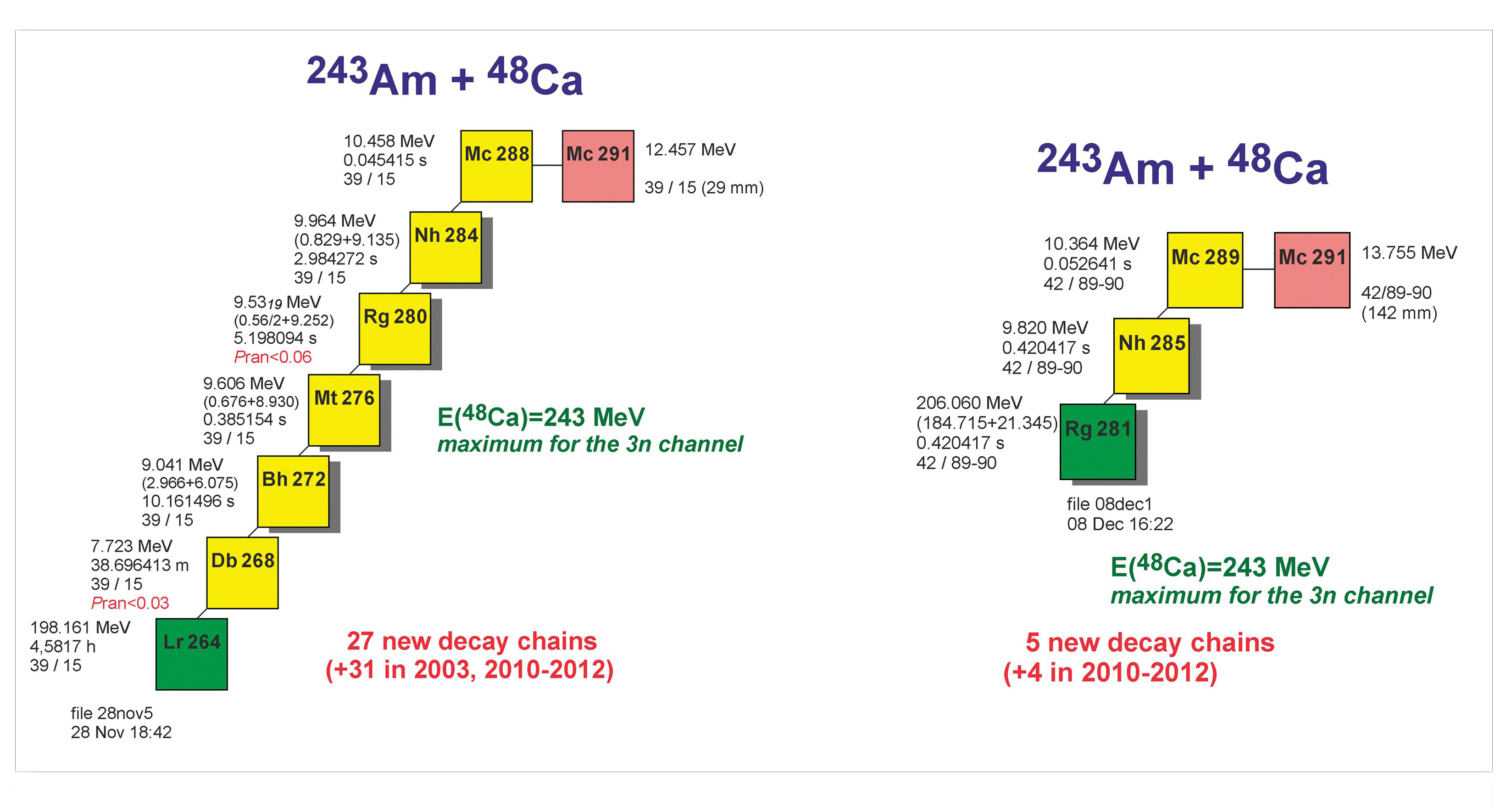First experiment launched at the Superheavy Element Factory
News, 25 December 2020
At the end of November, the first experiment was launched at the Superheavy Element Factory of the Flerov Laboratory of Nuclear Reactions JINR. First results were received, and this was the start of a long-term programme of the Institute on studying the properties of superheavy elements.
The experiment aimed at the synthesis of isotopes of Mc (Z=115) in the complete fusion reaction 243Am(48Ca,2-3n)288,289Mc. The study was preceded by a long period of test experiments that showed, in particular, highly efficient background suppression in the focal plane of the new GFS-2 gas-filled recoil separator, which is of great importance in registering rare decay events and events with long lifetimes.
The energy of 48Ca projectiles in the first run amounted to 243 MeV, which was consistent with the maximum of the 3n channel cross-section for the reaction. During the three-week run, 27 decay chains of 288Mc and five decay chains of 289Mc were detected. This nearly doubled the statistics on these isotopes gathered at the U-400 accelerator complex over the period 2003–2012.
Since the 243Am+48Ca reaction cross-section is one of the largest among those for reactions of 48Ca with actinide targets, the experiment addresses both methodological and scientific challenges. One of the important preliminary research results was the registration of the alpha-decay of 268Db, which has never been observed before and leads to the discovery of a new isotope of lawrencium – 264Lr.
The results of the first experiment, while yet to be thoroughly analyzed, even now demonstrate the performance capability of the Factory of Superheavy Elements. This was the launch of the unique multi-year JINR research programme aimed at studying nuclear and chemical properties of superheavy elements!
The key element of the Factory of Superheavy Elements of JINR is the new DC-280 heavy-ion accelerator, the world leader among accelerators of this type. The designed intensity of accelerated heavy-ion calcium-48 beams produced at the DC-280 accelerator will reach 60 trillion ions per second, which is 10 times higher than intensities provided by its predecessors. Among the key tasks of the new JINR accelerator complex are studies of nuclear and chemical properties of superheavy elements and synthesis of new superheavy elements. The commissioning of the experimental building of the Superheavy Element Factory and the launch of its basic facility – DC-280 cyclotron – were held in March 2019.
